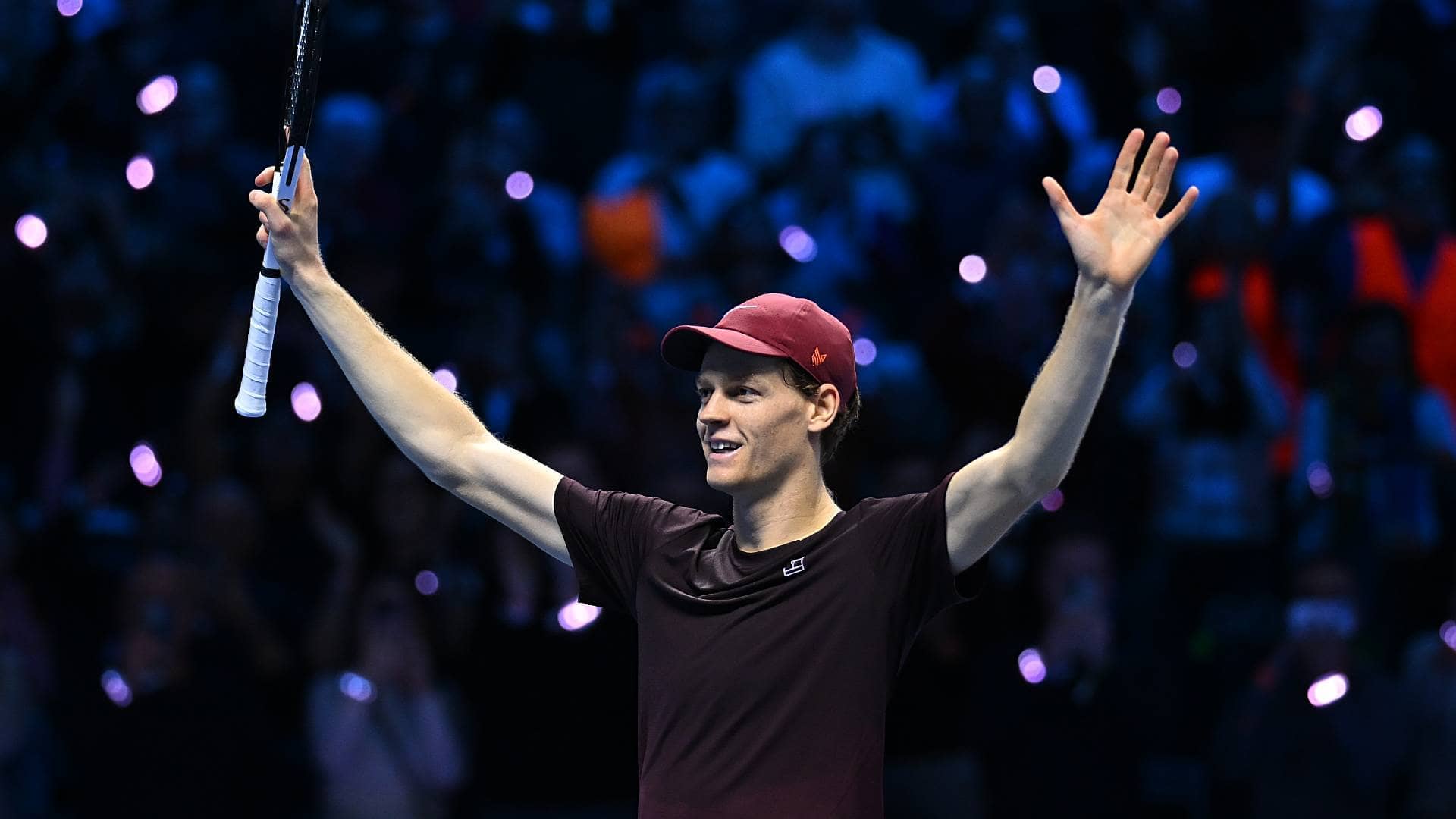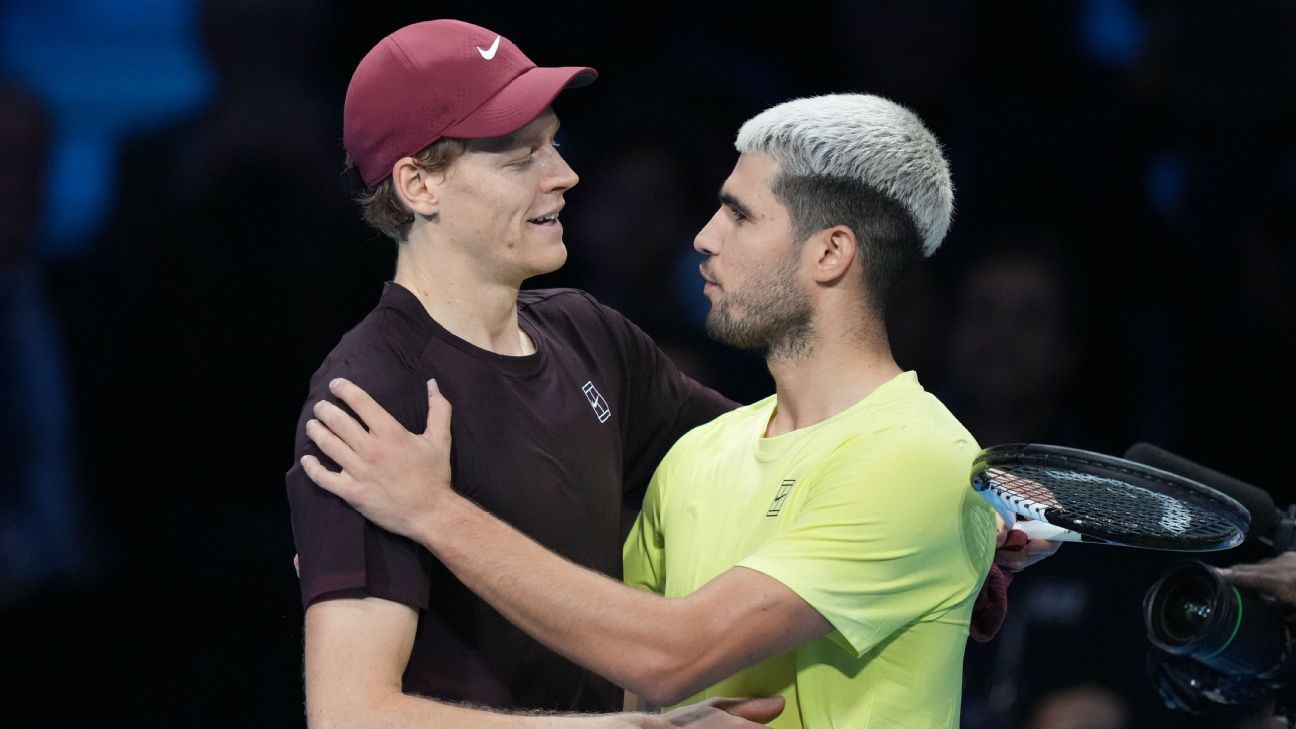Sinner's Serve Overhaul Drives Turin Defense
Jannik Sinner turned a mid-season vulnerability into year-end strength, his retooled delivery anchoring a tense straight-sets win over Carlos Alcaraz to defend the Nitto ATP Finals title before a fervent home crowd.

In the charged atmosphere of Turin's Inalpi Arena, Jannik Sinner wrapped up a remarkable 2025 with a commanding defense of his Nitto ATP Finals crown, outlasting Carlos Alcaraz in straight sets, 7-6(4), 7-5. The World No. 2's serve, refined in the wake of earlier setbacks, proved pivotal amid the indoor hard court's swift pace and the roar of local supporters. This triumph, sealing a 58-6 season record, highlighted not just technical gains but a resilient mindset that bridged major glories and targeted improvements.
Serve adjustments address key flaws
Even after reaching all four major finals and claiming titles at the Australian Open and Wimbledon, Sinner's team identified serve inconsistencies following his US Open defeat. Simone Vagnozzi explained the post-New York overhaul, focusing on motion and rhythm to boost reliability across hard-court swings from Shanghai's outdoors to Turin's enclosure. These shifts allowed the 24-year-old to adapt swiftly, turning potential weaknesses into weapons that disrupted returns and shortened points.
“For sure after the US Open we saw some issues, especially with the serve,” said Vagnozzi at Inalpi Arena after Sinner’s 7-6(4), 7-5 final triumph. “We changed the motion. We changed the rhythm. He served really well from Shanghai until here. Today in the second set he struggled a little bit. I think Carlos changed his position on the second serve, changed something on the serve of Jannik also. The second set he started to serve too slow. This also changed the rhythm from the first set. On the serve, we changed a lot of things after the US Open. We are lucky to have Jannik, who is really fast to improve, to understand the changes and everything.”
The Italian's quick uptake restored tempo in baseline rallies, where he mixed flat first strikes with slice second serves to the backhand, forcing Alcaraz into defensive crosscourt replies. In the opener, this precision helped save a set point via a down-the-line ace, the ball skidding low off the surface to ignite the crowd's surge. Such moments underscored how the tweaks enhanced control, the sport's most dependable element against a rival known for explosive inside-in forehands.
Coaches elevate velocity and precision
Darren Cahill emphasized the serve's unique role in tennis, where players dictate the opening without opposition. Over four to five weeks, he and Vagnozzi accelerated Sinner's delivery, raising miles per hour while inching serves toward the lines for more free points and fewer double faults. This balance propelled post-US Open success, including ATP 500 wins in Beijing and Vienna, a Masters 1000 in Paris, and the Turin finale, where indoor conditions amplified the ball's penetration.
“You have control over one shot in tennis, and that is the serve,” said the Australian. “Jannik and Simone have done some incredible work over the last four or five weeks to rejig the serve and find that rhythm and tempo where he has been able to up the first-serve percentage. It is not just that about the first-serve percentage. If we were really concerned about the first-serve percentage, we would let him slow the serve down to let him get more first serves in. He's actually pumped up the miles per hour, and he is getting the ball closer to the line, which means he gets a lot more free points. They've done a wonderful job with that.”
Time for a team photo with a special guest @janniksin | #NittoATPFinals pic.twitter.com/NAoSRQ5xFA
— ATP Tour (@atptour) November 16, 2025
Against Alcaraz's adjustments—shifting stance to pressure second serves—the 24-year-old countered with varied placement, using inside-out serves to open the ad court for his one–two combinations. From 1-3 down in the second set, this tactical flexibility flipped momentum, the home fans' energy pulsing through each hold as echoes filled the arena. The narrowed head-to-head to 6-10 reflected not only skill but a psychological edge, honed through relentless refinement.
Resilience shines in emotional finale
Vagnozzi lauded Sinner's composure amid the match's swings, from brilliant exchanges to errant shots, as the tight scoreline captured a rivalry's intensity. The player's belief persisted through breaks, steadying his game with serves that reset geometry and invited errors on returns. This Turin run, blending hard-court efficiency with mental poise, closed a dominant stretch while revealing polish points for the off-season.
“It was a really emotional match. Really tight match,” said the coach. “I think both of them, they had periods when they played really good, and sometimes they made some mistakes. We saw Jannik always fighting with a good attitude, with a good face. He always believed, also in the second set when he was a break down, couldn't change the direction of the set. We are really happy about Jannik’s performance. I think there is still something to work on also after this win, the match showed something that we can try to make better. But I’m really happy how we finished the season with unbelievable three tournaments in a row. We are pumped to start next season.”
The indoor lights cast sharp shadows on the court, mirroring the season's contrasts: grass-court euphoria at Wimbledon yielding to hard-court recalibrations that sustained No. 2 status. As cheers faded, the focus turned forward, with Sinner's evolved serve poised to tackle 2026's diverse challenges, from clay's slide to renewed major pursuits, building on a foundation of adaptive strength.


